Depending on the time of day our Black Cab Tour will start off at the Iron Age fortress of Old Sarum, dating back to 500 BCE, with evidence of Neolithic settlement as far back as 5,000 years. The site was occupied by the Romans and then by the Saxons who displaced local Britons in 552 CE. 300 years later it was the turn of the Vikings. With the arrival of the Normans a motte and bailey was constructed to subdue the local population.
The Great English Day Out Black Cab Tour
Stand in awe at the imposing stones of Stonehenge & Avebury, marvel at the majestic spire of Salisbury Cathedral, and unraveling the secrets of the ancient fortress Old Sarum. Enjoy a delicious pub lunch by the River Avon, explore charming thatched villages, and discover hidden gems like Saxon churches and prehistoric sites.
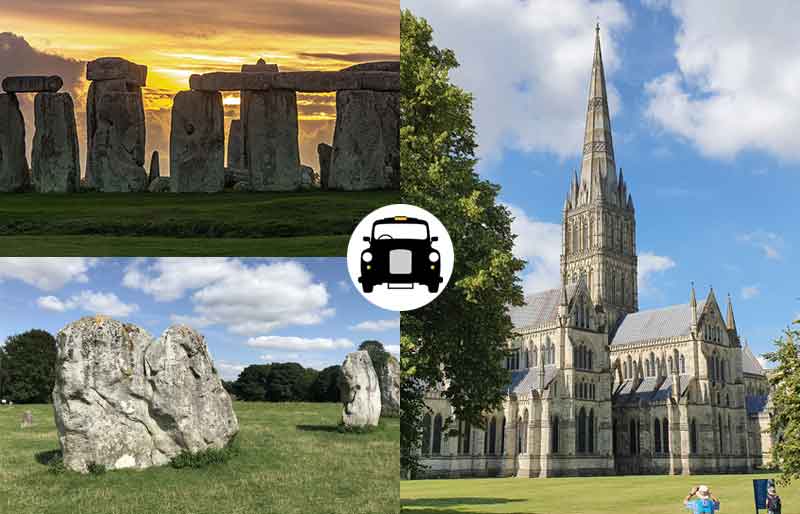
£
Itinerary so far...
Our qualified, registered and experienced Black Cab tour guides will take you to the World Heritage Sites of Stonehenge and Avebury, as well as Salisbury Cathedral and Old Sarum, the largest prehistoric stone circle in the world. For lunch, how about a lovely pub by the River Avon? You'll see lovely thatched hamlets, and flint and stone-built churches and houses on the way.
Travel in air-conditioned, chauffeur-driven London Black Taxi built to accommodate up to 6 people and have access to most of the country's bus lanes, which means that, in most cases, we can go to places otherwise closed to other vehicles. Our pick ups are in London but we can pick up almost anywhere you wish.
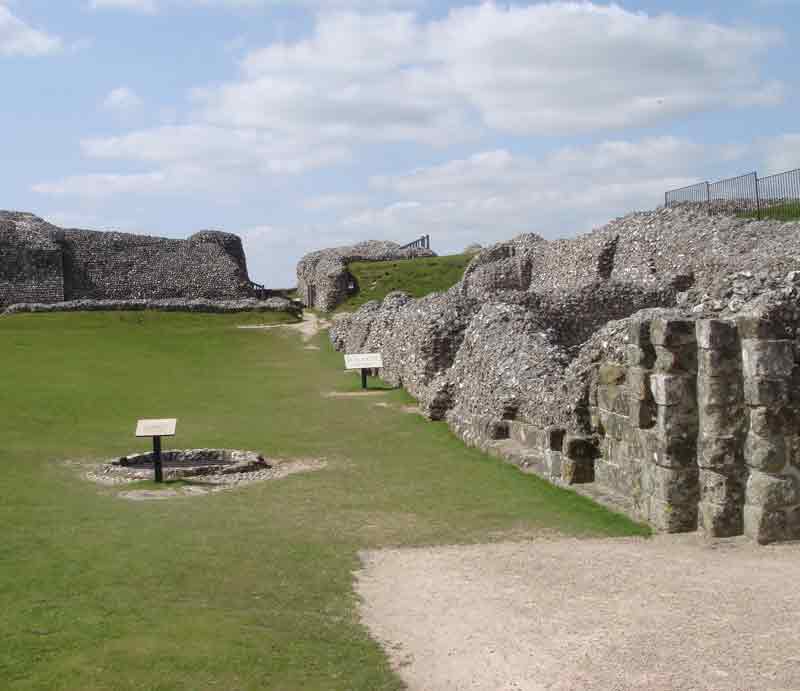
By the early 1200s Old Sarum was no longer fit for purpose and so an enterprising bishop moved the whole settlement 1.5 miles (about 2 kilometres) south to the site of the modern city of Salisbury.
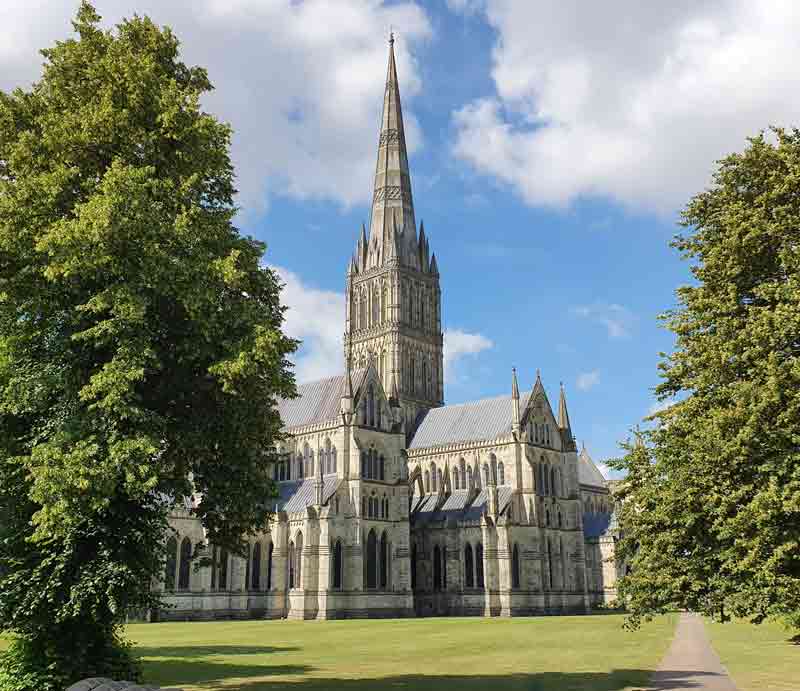
Salisbury Cathedral is a marvel of medieval engineering and its famous spire is remarkable, not only for its size—standing as it does at over 404 feet (about 110 metres), the tallest in England—but for its ingenuous weight saving honeycomb interior. Even so, Sir Christopher Wren (architect of London’s Saint Paul's Cathedral) was drafted to underpin the foundations as the spire had shifted. A 1960s survey revealed that the spire hadn't moved since, such was the genius of Wren.
Inside the cathedral we’ll see a 650 year old mechanical clock and fine early English Gothic architecture. Arguably the greatest treasure here is Magna Carta—a document that was sealed by King John in 1215. The 800 year old Chapter House with its Old Testament frieze is also not to be missed.
For lunch we like using a lovely pub by the River Avon. Fish and chips are on the menu as well as their very own Steak and Tanglefoot Ale Pie. Vegetarian and vegan options are also available.
After lunch we'll explore some lovely thatched house villages. Your guide will explain how the thatch is constructed and en route we'll also see some chequering—a craft that uses local stone and flint. We'll also see St. Melor's Church in the ancient town of Amesbury—a place steeped in legend. It is here that Saxon kings held winter court and where the French queen of Henry III is buried. And where, according to Thomas Malory, disgraced Queen Guinevere retired to a priory. Nearby, hidden in the trees, is the mesolithic site of Blick Mead, a place inhabited for over 10,500 years. Within the same wood there is an ancient unexcavated fortress, a strong candidate for King Arthur's Camelot. Certainly the place name of Amesbury has connections with Arthur's time, as your guide will explain.
Before Stonehenge's imposing stones come into view, we'll pause at Durrington Walls, a colossal earthen ring crowned with a grassy rampart, holding the secrets of a vibrant Neolithic community, and also Woodhenge, where ancient wood posts once stood in a circle.
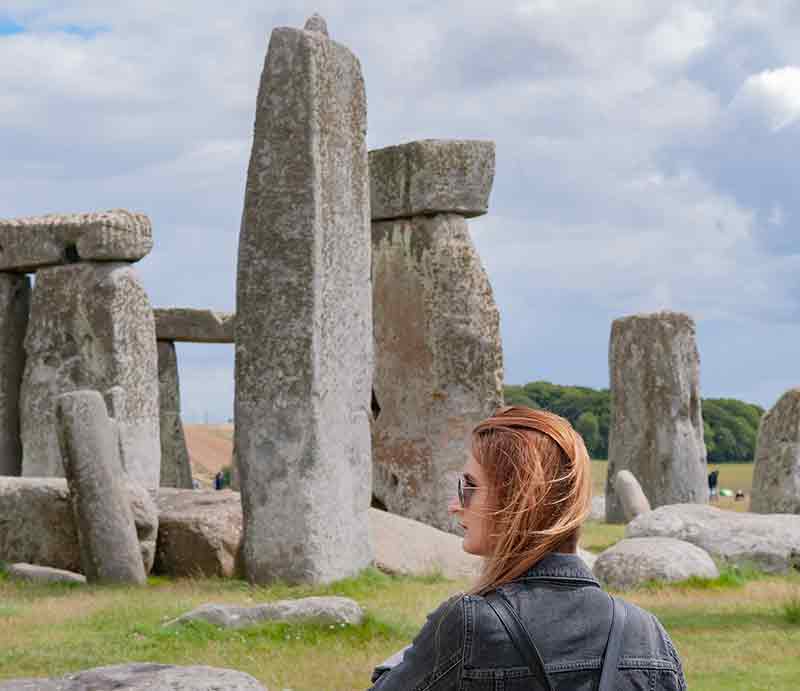
On to the World Heritage Site of Stonehenge now. This remarkable and unique site remains a mystery; we still don't know why it was built and what it was intended for. The site was developed over two distinct periods from the Neolithic to the Bronze Age, a time span of almost one and a half thousand years. It seems that Stonehenge was constructed to mark the passage of the solstices, and maybe the moon as well. We'll cover some of these ideas on our tour, bearing in mind that Stonehenge is just a small part of a massive landscape that was developed by early man.

In the Visitor Centre we can experience what it is like to stand in the middle of the Stone circle as it developed over the centuries and during the passage of the seasons. On display is some of the artefacts that were unearthed in the area, including some tools used in the construction of Stonehenge. Video shorts will explain how the stones were erected and how bronze was smelted. Outside the Visitor Centre is some reconstructions of huts that were used in the Bronze age, based upon excavations in the area.
A courtesy bus will take us up to the site itself, taking us through the sacred landscape of prehistoric man. We exit via the shop where souvenirs can be purchased. There's also a restaurant at the site, where hot and cold drinks and snacks can be purchased.
Heading north, following the River Avon, we'll cross over the Kennet & Avon Canal to see a chalk figure carved on the hillside and a very rare Saxon church. On the other side of the Marlborough Hills we'll see the quarry from which the larger stones at Stonehenge were sourced. A short drive takes us to an observation area where we can see a long barrow (an ancient burial place) as well as ‘The Sanctuary’—an ancient site where it is believed a witch doctor lived, later to be a shrine upon one of the oldest trackways in the country.
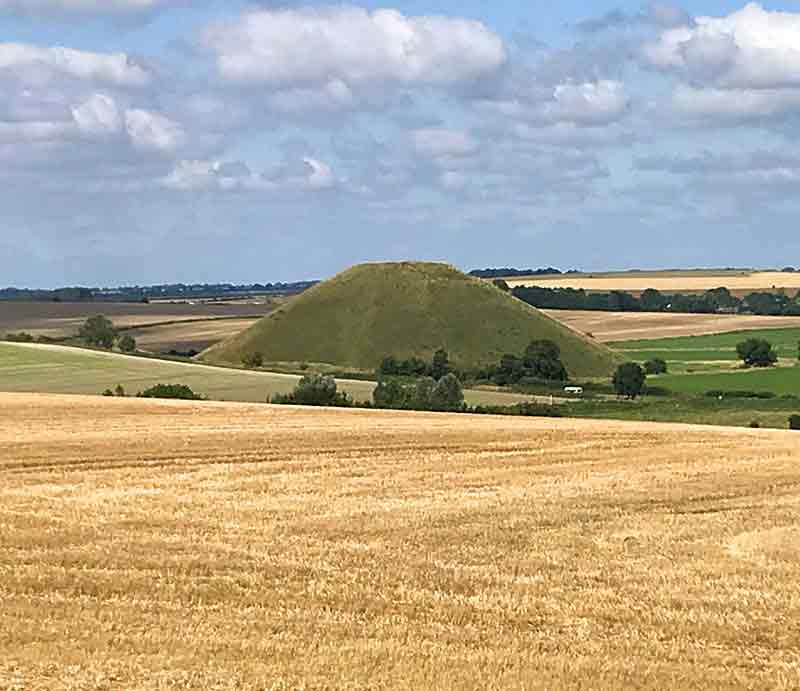
A short distance away is Silbury Hill, the largest prehistoric man made mound in Europe. Its purpose remains a mystery, although the structure has been thoroughly investigated, proving the people who built it had good knowledge of soil mechanics.
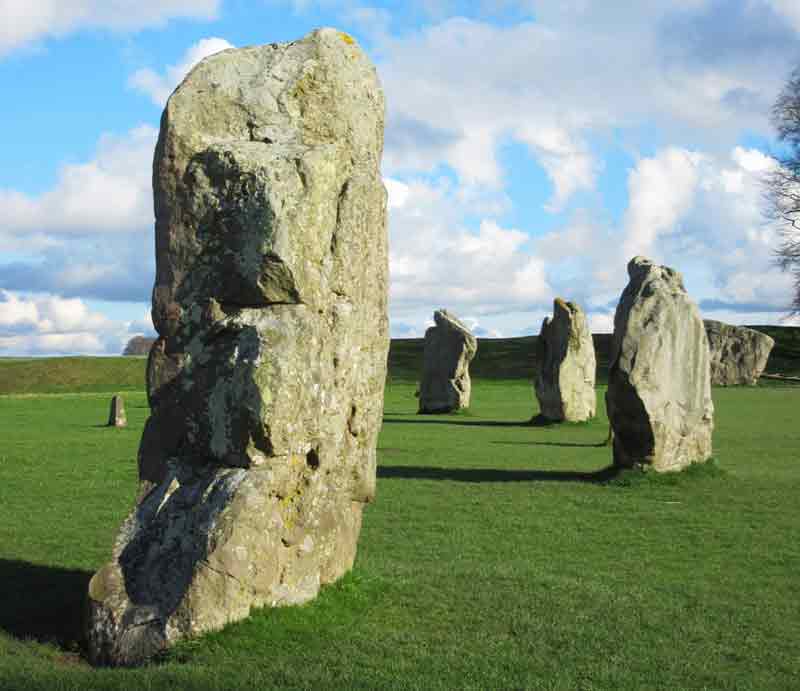
Next we will drive right into the middle of Avebury Stone Circle and take a walking tour with your guide who will explain how and when the site developed. We will also try to experience the power of the stones using some dowsing rods, and you can have a go yourself! Avebury also has a medieval church and the Henge Shop is an ideal place to browse for things such as books on crop circles, magic and dowsing.
On our return to London we join an old coaching road that takes us through the market towns of Marlborough (with the widest street in England and the tea shop where the Princess of Wales bought her cakes) and Hungerford, which played a pivotal part in the Glorious Revolution of 1688. The town also claims to be the antiques capital of England. We shall cross over the crystal clear Kennet river before we head back to London.
Type: Black Cab Tour
Exclusives: Travel in a traditional, wheelchair-accessible London black cab, permitted in areas restricted to regular vehicles. Accommodates up to 4 passengers with luggage or up to 6 passengers without.
Price: £1200. Prices do not include attraction tickets.
Languages: English-speaking tour guide plus language app available in English, French, German, Dutch, Italian, Spanish and Portuguese. Other languages available on request.
Pick up: Free pick up and drop-off anywhere in Central London
- Old Sarum
- Salisbury Cathedral
- Pub Lunch
- Woodhenge
- Durrington Walls
- Stonehenge
- Alton Barnes—St Mary's Saxon church & White Horse
- Lockeridge Dene—stone quarry from which the larger stones at Stonehenge are constructed
- Silbury Hill—the largest pre-historic mound in Europe
- Avebury—the largest stone circle in the world

 Book Tour
Book Tour


